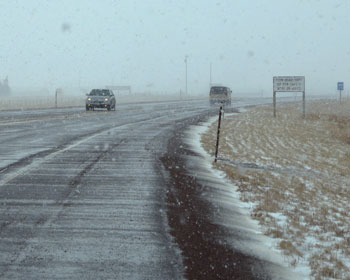Research Reports
Report Details
Abstract
 Over the last two decades, the use of advanced scientific and data-driven statistical methods has been continuously evolving to reduce the frequency and severity of crashes on our roadways. The American Association of State Highway and Transportation Officials (AASHTO) Highway Safety Manual (HSM) was first released in 2010. The manual is considered as a significant milestone in the advancement of the practices of roadway safety analyses. As a part of the 2010 HSM, safety performance functions (SPFs) are detailed as statistical models utilized to predict the expected number of crashes per year for a certain roadway facility as a function of traffic, roadway characteristics, and weather conditions. To better manage roadway safety, SPFs are used in: 1) assessing how safe or unsafe are specific roadway segments, intersections, special facilities, etc., and 2) evaluating how much safety has changed because of specific countermeasures or operational or design interventions. SPFs are commonly broken down into two main categories: simple and full. Simple SPFs typically utilize traffic volumes while full SPFs consider additional factors such as roadway geometry, driver characteristics, or weather conditions. Part C of the 2010 HSM, Predictive Methods, details the calibration procedure for jurisdiction specific SPFs. The primary limitation of the HSM Part C is that the developed SPFs for various road facilities were developed using data from only a few states in the United States, putting their validity and reliability into question as various states or regions are characterized by differing geographic features, weather conditions, and demographics. The primary purpose of this report is to examine the suitability and transferability of the 2010 HSM's SPFs to Wyoming-specific conditions.
Over the last two decades, the use of advanced scientific and data-driven statistical methods has been continuously evolving to reduce the frequency and severity of crashes on our roadways. The American Association of State Highway and Transportation Officials (AASHTO) Highway Safety Manual (HSM) was first released in 2010. The manual is considered as a significant milestone in the advancement of the practices of roadway safety analyses. As a part of the 2010 HSM, safety performance functions (SPFs) are detailed as statistical models utilized to predict the expected number of crashes per year for a certain roadway facility as a function of traffic, roadway characteristics, and weather conditions. To better manage roadway safety, SPFs are used in: 1) assessing how safe or unsafe are specific roadway segments, intersections, special facilities, etc., and 2) evaluating how much safety has changed because of specific countermeasures or operational or design interventions. SPFs are commonly broken down into two main categories: simple and full. Simple SPFs typically utilize traffic volumes while full SPFs consider additional factors such as roadway geometry, driver characteristics, or weather conditions. Part C of the 2010 HSM, Predictive Methods, details the calibration procedure for jurisdiction specific SPFs. The primary limitation of the HSM Part C is that the developed SPFs for various road facilities were developed using data from only a few states in the United States, putting their validity and reliability into question as various states or regions are characterized by differing geographic features, weather conditions, and demographics. The primary purpose of this report is to examine the suitability and transferability of the 2010 HSM's SPFs to Wyoming-specific conditions.
How to Cite
Ahmed, Mohamed, and Rameshwor Chalise. Calibration of the Highway Safety Manual's Safety Performance Functions for Rural Two-Lane Highways with Regional Considerations for the Rocky Mountains and Plain Regions, MPC-18-344. North Dakota State University - Upper Great Plains Transportation Institute, Fargo: Mountain-Plains Consortium, 2018.